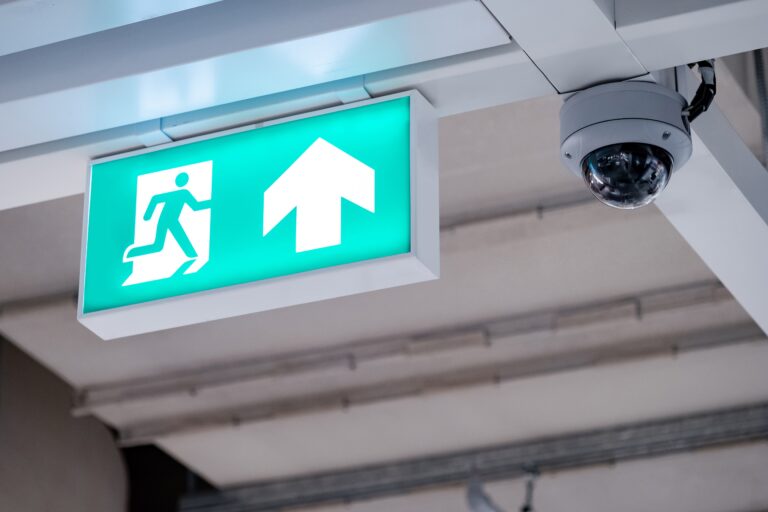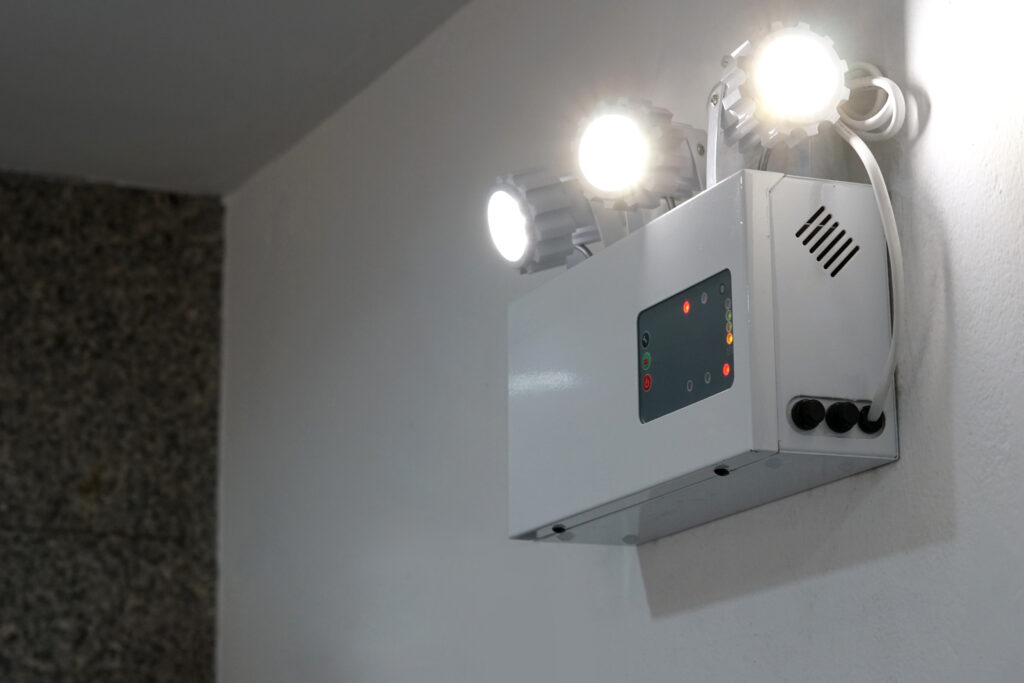

Lighting that automatically comes on when the power supply to the normal lighting provision fails.
Emergency lighting is a general term and is sub-divided into emergency escape lighting and standby lighting.
Emergency escape lighting – that part of an emergency lighting system that provides illumination for the safety of people leaving a location or attempting to terminate a potentially dangerous process beforehand. It is part of the fire safety provision of a building and a requirement of The Regulatory Reform (Fire Safety) Order 2005.
Emergency escape lighting is itself sub-divided into escape route lighting, open area lighting and high risk task area lighting.
Escape route lighting – that part of an emergency escape lighting system provided to ensure that the means of escape can be effectively identified and safely used by occupants of the building.
Standby lighting– that part of an emergency lighting system provided to enable normal activities to continue substantially unchanged. This guide does not include standby lighting as it is not a legal requirement and is a facility that may or may not be needed, depending on the use and occupancy of the premises, etc.
Our Team stands ready to take your call and meet on site.
Call us today on 01296 713010 to arrange your FREE, no obligation quote.
Alternatively email us at [email protected]
Or complete our contact form here to receive a prompt response to your query.
